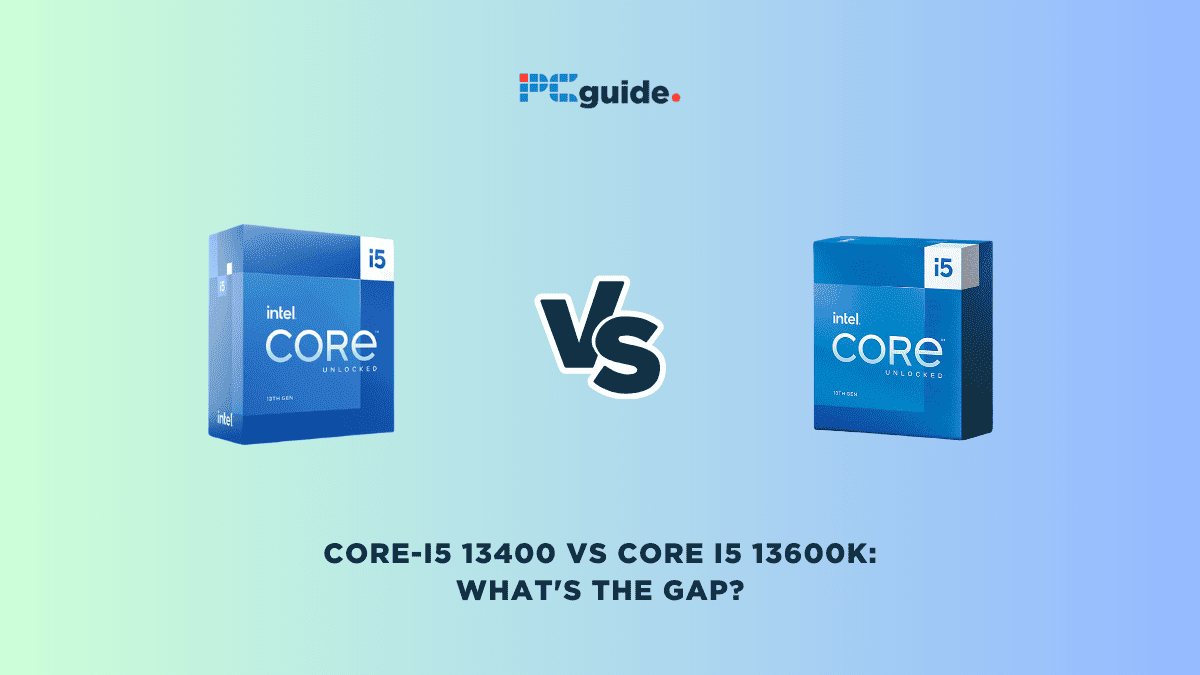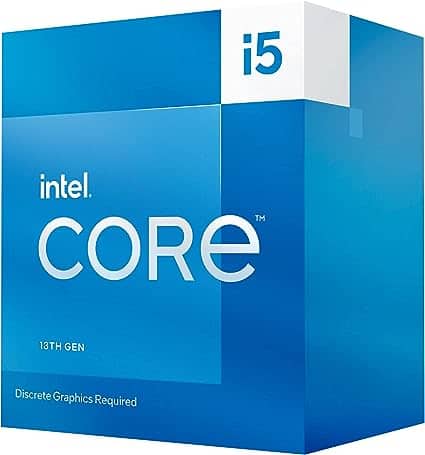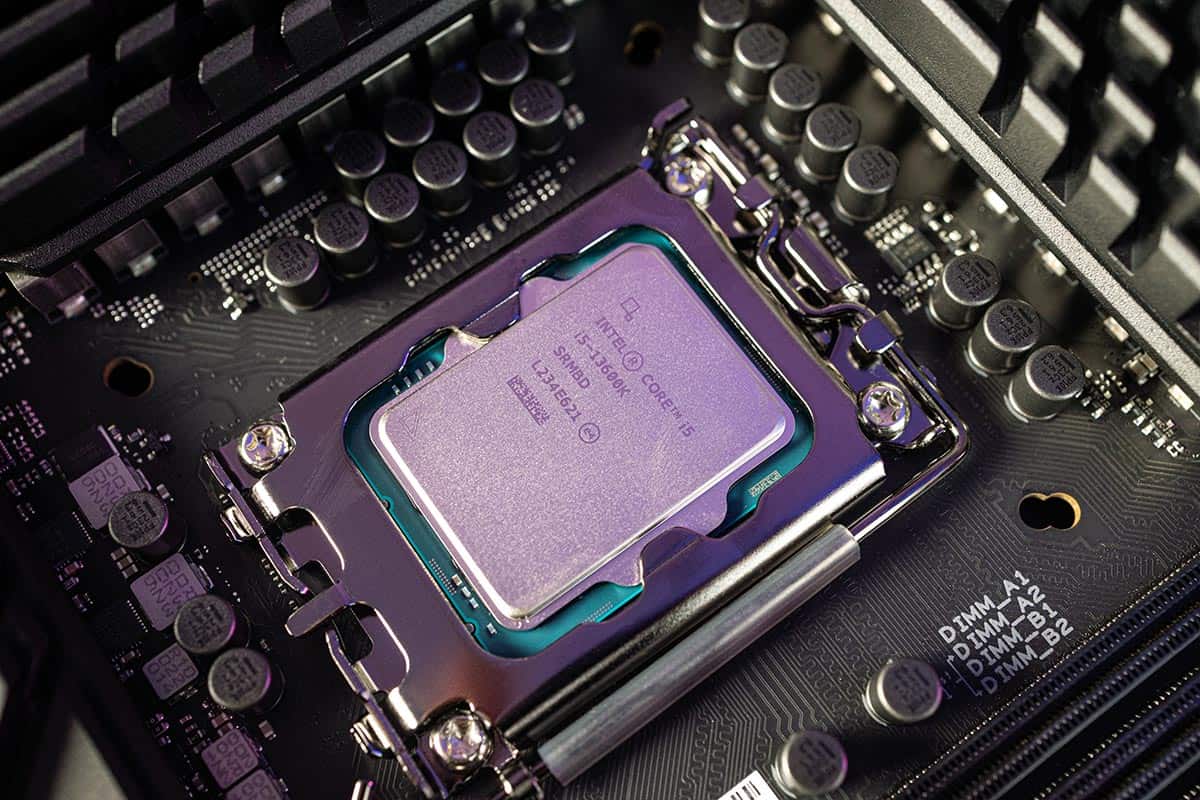Core-i5 13400 vs Core i5 13600K: What’s the gap?

Table of Contents
Comparing the Core-i5 13400 vs. Core i5 13600K presents a unique challenge in Intel’s 13th-generation CPU lineup. With the transition from Alder Lake to Raptor Lake architecture, these processors introduce a host of new features, including speed optimizer, adaptive boost technology, and thermal velocity boost.
This evolution suggests a potential edge for Intel’s latest CPUs over their 12th-generation predecessors. However, choosing between two high-end CPUs from the same generation, especially those released in Q4, requires careful consideration of their distinct capabilities.
Whether you’re focused on faster gaming performance or are an extreme workstation user, understanding the nuances in CPU cores and other key features is essential for making the right decision.
Core-i5 13400 vs. Core i5 13600K: Specs comparison
When comparing processors, examining their specifications provides insights into their capabilities and performance potential. The Core i5 13400 and Core i5 13600K, both from Intel’s 13th generation Raptor Lake lineup, showcase distinct technical characteristics that influence their suitability for different computing needs.
Core configuration and clock frequencies
The Core i5 13400 boasts a hybrid architecture, featuring 10 cores and 16 threads. Six of these cores are Raptor Cove performance cores, designed for demanding tasks, while the remaining four are Gracemont efficiency cores, optimized for energy-efficient operations. The Core i5 13600K, on the other hand, takes a different approach with 14 cores and 20 threads, comprised of 6 Raptor Cove performance cores and 8 Gracemont efficiency cores.
In terms of clock frequencies, the Core i5 13400 operates at a base frequency of 2.5 GHz for performance cores and 1.8 GHz for efficiency cores. The boost frequencies for these cores reach 4.5 GHz and 3.4 GHz, respectively. The Core i5 13600K, with its higher specifications, exhibits base frequencies of 3.5 GHz for performance cores and 2.6 GHz for efficiency cores. Its boost frequencies are even higher, reaching 5.1 GHz and 3.9 GHz, respectively.
| Specification | Core i5 13400 | Core i5 13600K |
|---|---|---|
| Architecture | Raptor Lake | Raptor Lake |
| Fabrication Process | 10 nm | 10 nm |
| Cores | 10 | 14 |
| Threads | 16 | 20 |
| Performance Cores | 6x Raptor Cove | 6x Raptor Cove |
| Efficiency Cores | 4x Gracemont | 8x Gracemont |
| P-Core Base Clock Frequency | 2.5 GHz | 3.5 GHz |
| P-Core Boost Frequency (Turbo) | 4.5 GHz | 5.1 GHz |
| E-Core Base Clock Frequency | 1.8 GHz | 2.6 GHz |
| E-Core Boost Frequency (Turbo) | 3.4 GHz | 3.9 GHz |
| L3 Cache | 20 MB (shared) | 24 MB (shared) |
| L2 Cache | 1280 KB (per core) | 2 MB (per core) |
| TDP | 65 W | 125 W |
| Socket | LGA 1700 | LGA 1700 |
| GPU Base Clock | 300 MHz | 300 MHz |
| GPU Boost Clock | 1550 MHz | 1500 MHz |
| Shading Units | 192 | 256 |
| TMUs | 48 | 16 |
| ROPs | 24 | 8 |
| Memory Types | DDR5-4800/DDR4-3200 | DDR5-5600/DDR4-3200 |
| Maximum Memory Bandwidth | 76.8 GB/s | 89.6 GB/s |
| ECC Support | No | Yes |
| Price | $221 | $409 |
Cache and power consumption
The Core i5 13400 features a 20 MB shared L3 cache and 1280 KB per-core L2 cache. The Core i5 13600K, on the other hand, boasts a larger 24 MB shared L3 cache but a smaller 2 MB per-core L2 cache. This indicates that the Core i5 13600K prioritizes overall cache capacity, while the Core i5 13400 focuses on per-core cache performance.
Power consumption, as indicated by the Thermal Design Power (TDP), also varies between the two processors. The Core i5 13400 has a TDP of 65 W, making it a more power-efficient option. This lower power draw translates into reduced heat generation and less demanding cooling requirements. The Core i5 13600K, in contrast, has a higher TDP of 125 W, reflecting its increased power demands due to the higher core count and clock speeds.
Additional features
Both processors share the LGA 1700 socket and have integrated graphics (Intel UHD Graphics 730) with similar base and boost clock speeds. However, the Core i5 13600K boasts more shading units (256 vs. 192), potentially offering a slight graphics performance advantage for basic graphics tasks.
One notable feature exclusive to the Core i5 13600K is its ECC (Error-Correcting Code) support. ECC provides enhanced data integrity by detecting and correcting memory errors, making it a valuable feature in professional applications where accuracy is paramount.
Which CPU is better for a virtual PC build?
For a virtual PC build, the Core i5 13600K might be a better choice due to its higher core and thread count, which can handle multiple virtual machines more efficiently.
Are there specific motherboards recommended for each CPU?
Both CPUs use the LGA 1700 socket, so they’re compatible with motherboards that support this socket. However, always check for the latest BIOS updates to ensure compatibility.
Core-i5 13400 vs. Core i7 13600K: Performance
The Core i5-13400, while being a more budget-friendly option, doesn’t fall short in delivering solid performance. It’s particularly appealing for users with moderate computing needs, offering a balance of power efficiency and raw computational performance. This makes it a strong contender for those seeking the best upgrade options without stretching their budget.
On the other hand, the Core i5-13600K stands out for extreme workstation users and enthusiasts. Its higher core count and advanced multi-core bandwidth capabilities make it a powerhouse for parallel processing tasks. This is crucial for activities like intensive video editing, 3D rendering, and software development, where multi-core performance is key.
Gaming and in-game FPS
For gamers, the Core i5-13600K’s higher clock speeds are a game-changer. This translates to better in-game fps, providing a smoother and more immersive gaming experience. Coupled with Nvidia's RTX graphics cards, the Core i5-13600K becomes an ideal choice for building high-performance gaming rigs.
RAM and latency tests
In terms of memory performance, both CPUs perform admirably in RAM tests. However, the Core i5-13600K might have a slight edge in scenarios where lower latency and higher bandwidth are crucial. This is particularly relevant for applications that rely heavily on quick memory access.
Future-proofing with Meteor Lake
Looking ahead, the Core i5-13600K aligns well with Intel’s upcoming Meteor Lake architecture. This positions it as a future-proof option for builders planning to upgrade their systems down the line.
Integrated graphics (iGPU) and ECC support
Both processors offer integrated graphics (iGPU), with the Core i5-13600K likely providing a bit more punch in this area. Additionally, the presence of ECC support in the Core i5-13600K caters to professional users who require error correction for critical applications.
Which CPU is recommended for PC gamers?
For PC gamers, the Core i5 13600K might be the better choice due to its higher performance in gaming benchmarks. However, the Core i5 13400 is still a solid choice for gamers on a budget.
Core-i5 13400 vs. Core i7 13600K: Price and value
When it comes to building a PC, price and value are crucial considerations. The Core i5-13400, priced at an accessible $221, represents an excellent choice for typical consumers. It strikes a fine balance between affordability and performance, offering a better value-to-performance ratio for those who need a reliable CPU without a hefty price tag.
In contrast, the Core i5-13600K, priced at $409, targets a different segment of the market. This CPU is tailored for users who prioritize top-tier performance and are prepared to invest more in their setup. While it comes at a higher cost, the performance benefits justify the price for power users and enthusiasts.
Market positioning and value assessment
- Combined Market Share: Both CPUs contribute significantly to their respective brands’ market share, with the Core i5-13400 appealing to budget-conscious buyers and the Core i5-13600K attracting performance-focused users.
- Current Prices of the CPUs: The current prices reflect the targeted consumer base for each model, with the Core i5-13400 being more aligned with the financial constraints of typical consumers.
- Best Value: The Core i5-13400 is often cited as the best value for money, especially for users who require a competent CPU for everyday tasks and moderate gaming.
- Current Market Leaders: While both CPUs are competitive, their appeal varies based on the specific needs and budgets of different user groups.
Tabular price comparison
| CPU Model | Price (USD) | Target Consumer Base | Value Proposition |
|---|---|---|---|
| Core i5-13400 | $221 | Budget-conscious consumers | High value-to-performance |
| Core i5-13600K | $409 | Performance-focused users | Top-tier performance |
This table helps in visualizing the price difference and the corresponding value each CPU offers to its intended market segment. The Core i5-13400 emerges as a more budget-friendly option, while the Core i5-13600K caters to those seeking higher performance, regardless of the cost.
How do these CPUs perform in benchmarks?
In benchmarks, the Core i5 13600K generally outperforms the 13400, especially in tasks that use more cores and threads. This includes most modern games and professional applications like video editing.
Are there specific motherboards recommended for each CPU?
Both CPUs use the LGA 1700 socket, so they’re compatible with motherboards that support this socket. However, always check for the latest BIOS updates to ensure compatibility.
Final verdict
We recommend going for Core i5-13600K for its superior performance. The processor surpasses Core i5-13400 in many ways. It's higher number of cores, threads, clock speeds, and cache memory gives it a significant advantage.
However, the choice between the Core i5-13400 and the Core i5-13600K depends on your specific needs and budget. If you’re on a tight budget and require solid performance for everyday tasks and light gaming, the Core i5-13400 is a sensible choice.

